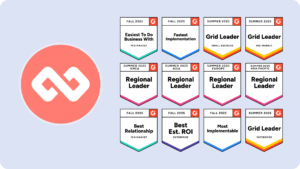A simple framework to turn stories into insights—and insight into growth
Why stories matter in mentoring
A good story can reveal more than a resume ever could.
In mentoring, the way someone talks about a challenge or success can offer insight into how they think, what they value, and where they’re growing. It’s not just about what happened, it’s about how they frame it, what they took away, and how that experience shaped them.
That’s where the STAR method comes in. This simple storytelling framework helps mentors and mentees unpack experiences in a way that’s structured, thoughtful, and full of learning potential. It transforms “that time something happened at work” into a powerful reflection and makes it easier to spot patterns, surface strengths, and spark growth.
What is the STAR Method?
The STAR method is a technique often used in behavioral interviews, but its principles can be applied to various situations, including mentoring meetings.
STAR stands for Situation, Task, Action, and Result.
This framework encourages individuals to think critically about their experiences and articulate them clearly, which can foster deeper conversations.
By using the STAR method, both mentors and mentees can better understand the context of challenges faced, the actions taken, and the outcomes achieved. This not only aids in personal reflection but also enhances the learning experience for both parties involved. The STAR method serves as a bridge, connecting theoretical knowledge with practical application, thereby making discussions more meaningful and impactful.
Breaking Down the STAR Components
To effectively utilize the STAR method, it’s essential to understand each component:
- Situation: Describe the context within which you found yourself. What was happening at the time?
- Task: Explain the specific task or challenge you were faced with. What was your responsibility?
- Action: Discuss the actions you took to address the situation. What steps did you take?
- Result: Share the outcomes of your actions. What was the impact of your efforts?
Why Use the STAR Method in Mentoring?
We often remember stories, not facts. But when those stories lack structure, the insight can get a little lost. The STAR method keeps things focused while still personal.
Here’s how it adds value:
It helps mentees reflect with clarity
Instead of saying, “I had a tricky project,” they say:
“I was working on a product launch with limited resources (S). My job was to align the marketing and sales teams (T). I ran weekly syncs, created shared messaging documents, and set up joint KPIs (A). As a result, we launched on time and exceeded our lead target by 30% (R).”
Suddenly, it’s a lot easier to understand what they did and why it mattered.It surfaces themes for mentors to explore
With this additional information and insight, it might become easier to notice patterns: a mentee who consistently steps up in high-pressure situations or someone who avoids conflict. These themes give you direction for coaching.It builds confidence in storytelling
Many mentees will one day interview for new roles, pitch ideas, or lead teams. Practicing STAR stories now builds communication skills they’ll carry forward.
How to bring the STAR Method into your next mentoring meeting
You don’t need to make it formal, just weave it in naturally.
Mentors can ask:
- What was the situation?
- What were you aiming to achieve?
- What actions did you take personally?
- How did it turn out, and what did you take away from it?
Mentees can prepare:
- A recent moment of challenge, growth, or decision-making
- One story with a professional focus, one more personal
- A draft STAR outline, even if rough (jotting down bullet points is enough!)
Try this exercise in your next Loop:
- Pick a theme – For example, a time you navigated change, dealt with conflict, or tried something new
- Each person brings one story – Mentor and Mentee
- Use the STAR framework to share
- Reflect together – What strengths did we spot? What would we do differently next time?
This works especially well midway through a mentoring relationship, when there’s some trust built and you’re looking to go deeper.
Keep it real: Tips for a better STAR story
The beauty of the STAR method is that it brings structure to storytelling, not that it turns mentoring into a formal performance. So don’t stress about getting it “perfect.” Keep it authentic, conversational, and human.
✨ Don’t over-script it—this isn’t a job interview
You’re not pitching yourself to a hiring panel. You’re talking to someone who’s here to help you grow. If you stumble, pause, or forget a detail—that’s okay. The goal is clarity and reflection, not a polished monologue.
🎯 Avoid generalities—get specific
Instead of saying “I worked hard on that project,” try:
I created a new onboarding checklist after noticing people were dropping off in week one—and it improved activation by 40%.
The more concrete the actions and outcomes, the more meaningful the story becomes. Plus, it helps mentors understand how you think and why you made the choices you did.
🧠 Reflect on the learning, not just the result
It’s easy to focus on whether something “worked” or not, but the real value often comes from what it taught you.
Even though the campaign underperformed, I learned how to manage a cross-functional team and now I’m more confident setting boundaries.
This kind of insight shows growth, and that’s what mentoring is all about.
🤝 Mentors: share your own STAR stories too
When mentors bring their own stories to the table, it levels the playing field. It shows that everyone has faced tough moments, made mistakes, or had unexpected wins. Sharing your STAR moments doesn’t just build trust—it models the kind of reflection and vulnerability that creates meaningful conversations.
STAR is Just the Start
The STAR method isn’t about perfect storytelling, it’s about meaningful reflection. It helps participants get more out of their mentoring sessions and shows mentors where to focus their support.
So next time you’re in a mentoring meeting, try asking:
“What was the situation, and what did you do?”
You might be surprised by the insights that follow.
Because mentoring isn’t just about giving advice—it’s about discovering new perspectives, building confidence, and creating space for growth. And sometimes, all it takes is the right story, told the right way, to spark a breakthrough.




